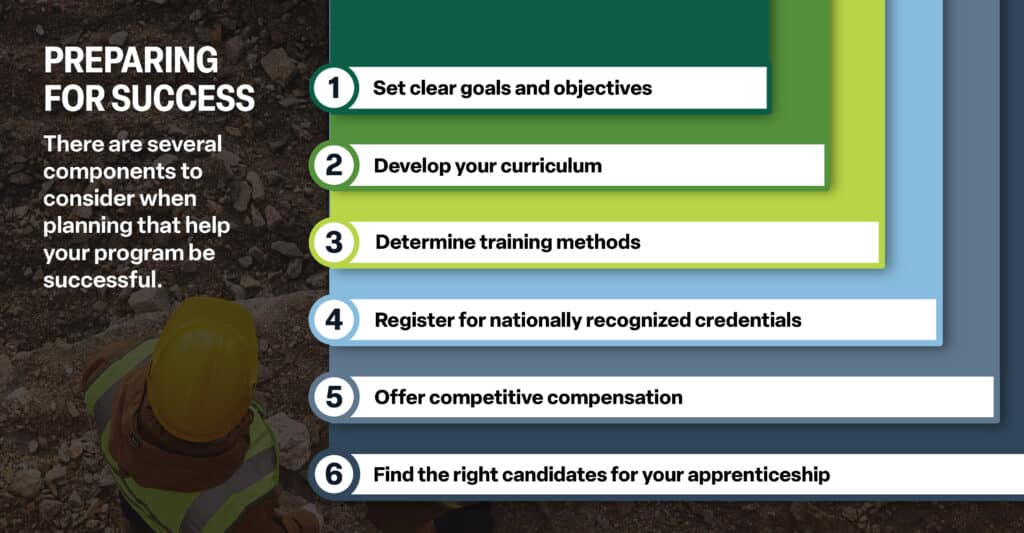



Set Clear Goals and Objectives
Define what success will look like and create measurable goals. Determine if you will measure one or more of the following or utilize an entirely different metric(s):
- Did your team increase productivity?
- Has your jobsite experienced increased safety?
- Did your organization provide proper industry training to your apprentices?
- How many apprentices received nationally recognized certifications due to the training they received?
- Has your team helped build a qualified talent pipeline for your organization?
Develop Your Curriculum
To help your inexperienced candidates and those you would like to help achieve journey-level status, build their skills progressively. Your program could include:
- Classroom instruction
- On-the-job training
- Constructive feedback from experienced mentors
- Official certification exams that lead to a credential
In our example, SimScholars™ curriculum is a turn-key training solution meant to be integrated into heavy equipment operator training programs. It is a one-to-one match with Cat® Simulators training exercises. Both SimScholars and Cat Simulators generate reports that show measurable outcomes for learners.
Determine Training Methods
Apprentices need safe, proper training methods that help build their confidence and knowledge. Training methods can include:
- Hands-on training using simulators
- Using a professionally prepared curriculum
- On-the-job training with mentors
Construction company CW Matthews developed an apprenticeship program using Cat Simulators and SimScholars curriculum to recruit and train new heavy equipment operator apprentices.
“Cat Simulators, along with the SimScholars curriculum, really puts our students on the fast track to becoming operators.”
-Jeremy Whitaker, Director of Training & Recruitment, C.W. Matthews Contracting Co., Inc.



Register for Nationally Recognized Credentials
Registered apprenticeship programs lead to industry-recognized credentials and offer access to:
- Federal resources
- Tax incentives
- Training grants
- Technical assistance
On-the-job learning in a registered apprenticeship program typically leads to a journey-level credential in the trade. This not only benefits the apprentice but also helps your company.
For example, a Cat Simulators learner can earn a simulator credential from our partner National Center for Construction Education and Research (NCCER).
Offer Competitive Compensation
A competitive package is crucial and should include:
- Fair compensation
- Competency-based pay
- A clear career pathway
Research industry standards to determine a fair and competitive apprentice pay structure. Competency-based pay rewards apprentices for their skills and progress and encourages them to continue developing their skills.
See a U.S. map showing the need for heavy equipment operators. Pay ranges will depend on location and operator demand.
Find The Right Candidates for Your Apprenticeship
When recruiting apprentices, look for candidates who are:
- Motivated to learn
- Can take direction and feedback
- Are reliable and punctual
- Can work independently and with a team
- Are committed to the program
Ask about their long-term career goals and ensure they fit your company’s culture well.



